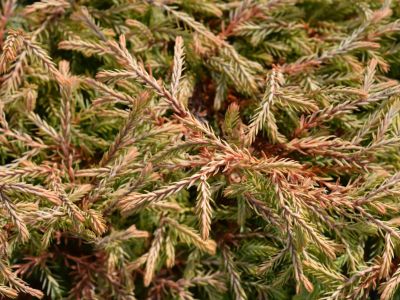About Mr. Bowling Ball Thuja
Arborvitae are common ornamental shrubs. The specimen Mr. Bowling Ball arborvitae has curved appeal that needs no pruning to keep it in true form. This charming shrub is a rounded ball-like plant with a perky appearance and compact shape. While not readily available at many nursery centers, the plant is easy to order from online catalogs. What’s in a name? This arborvitae is also known as Bobozam arborvitae. Thuja occidentalis ‘Bobozam’ is a cultivar of American arborvitae, a native shrub to North America. It has a naturally dense form that is a dwarf of the native shrub. The plant matures up to 3 feet (1 m.) with a similar width. (Note: You may also find this plant under the synonym Thuja occidentalis ‘Linesville.’) The bright green, evergreen foliage swirls around the balled form and is softly lacy. The almost unnoticed bark is gray with rusty red furrows. Bobozam arborvitae grows so close to the ground that the foliage mostly covers this classic bark of the false cedar family. Tiny cones appear in late summer but are of little ornamental interest.
Growing a Mr. Bowling Ball Shrub
The Mr. Bowling Ball shrub is very tolerant of a range of conditions. It prefers full sun but can also grow in partial shade. This plant is suitable in USDA zones 3 to 7. It thrives in a variety of soil types, including hard clay. Best appearance will be achieved in sites that are moderately moist with a pH anywhere from alkaline to neutral. Once established, Mr. Bowling Ball arborvitae can tolerate brief periods of drought, but sustained dryness will eventually impact growth. This is a cool to temperate region plant that loves rain and has year-round appeal. Even tough winters don’t diminish the spectacular foliage. If you want a low maintenance plant, Mr. Bowling Ball shrub is the plant for you. Keep new plants well-watered until the root mass spreads and adapts. During summer, water deeply and again when the top of the soil is dry. Mulch around the base of the plant to help conserve moisture and prevent competitive weeds. This arborvitae is pest and disease resistant. Fungal leaf blight may occur, causing spotted foliage. The only occasional pests might be leaf miners, spider mites, scale, and bagworms. Use horticultural oils and manual methods to combat. Feed this marvelous plant once per year in early spring to enhance the foliage and keep Mr. Bowling Ball happy.
